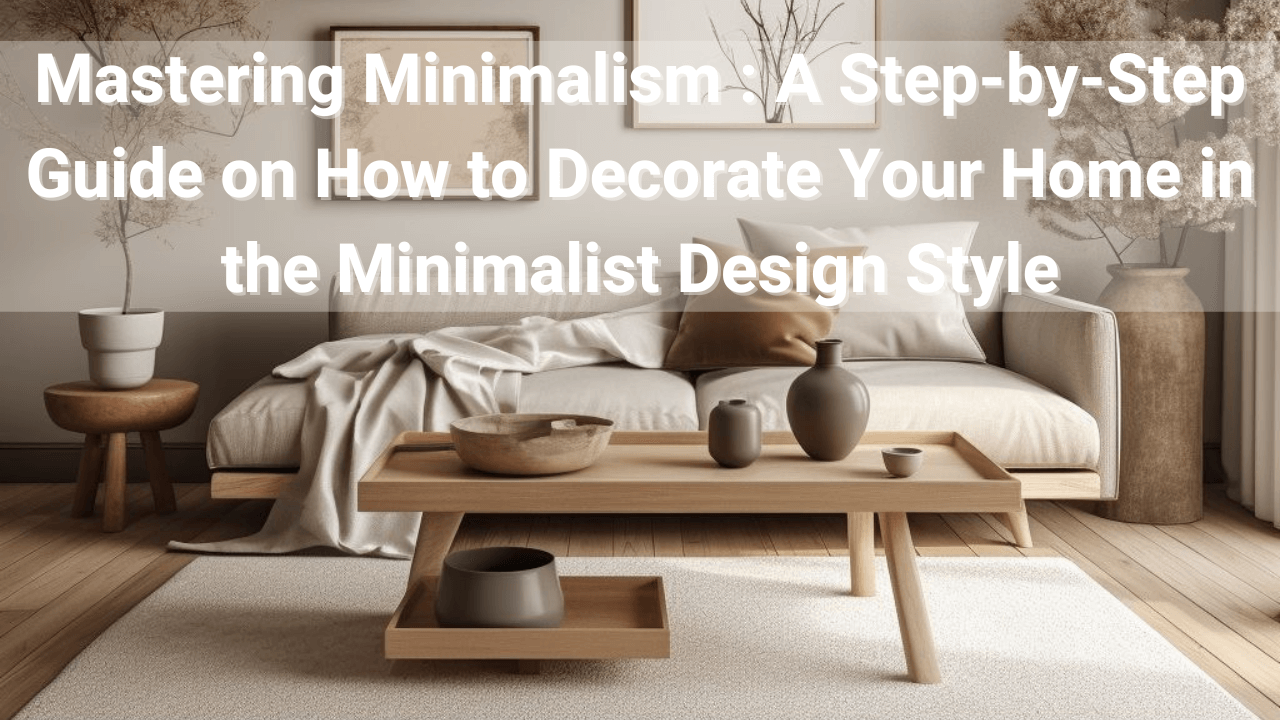Introduction to Minimalist Living
What Is Minimalism?
Minimalism is more than just a trend — it’s a lifestyle choice centered around intentional living. It’s about choosing what truly matters and letting go of what doesn’t. Picture your life as a backpack. Over time, we stuff it with clutter, distractions, and unnecessary baggage. Minimalism asks: what can you take out to walk lighter?
Common Misconceptions About Minimalism
Many think minimalism means owning nothing, living in a white room with one chair and no fun. Nope! It doesn’t mean deprivation. It’s about owning fewer things but better things — and making space for what actually brings you joy.
Why Choose Minimalist Living?
Benefits of a Minimalist Lifestyle
-
More clarity. Less mess = less stress.
-
More time. Fewer chores, fewer decisions.
-
More money. You stop buying things you don’t need.
-
Better focus. With fewer distractions, your brain breathes.
The Psychological Impact
Living minimally is like a detox for your mind. Research shows that clutter increases cortisol (stress hormone). Decluttering can boost your mood, improve focus, and even help you sleep better.
Getting Started with Minimalism
Step 1: Shift Your Mindset
Minimalism isn’t just about stuff — it’s a mindset. Start by asking yourself: Why do I want to simplify? Is it peace? Freedom? Clarity? Write it down. Your “why” will be your North Star.
Decluttering Your Thoughts First
Before you tackle the closet, tackle your thoughts. Journaling, meditating, or just sitting quietly helps you figure out what’s worth keeping — in your head and your home.
Step 2: Start Small
Don’t toss everything at once — that’s a recipe for overwhelm.
-
Pick one drawer or one corner of a room.
-
Finish it completely before moving on.
Quick Wins to Stay Motivated
-
Clear out your junk drawer.
-
Donate clothes you haven’t worn in a year.
-
Toss expired products from your bathroom.
These easy wins boost momentum!
Step 3: Declutter Ruthlessly
Use these popular methods:
-
The KonMari Method: Ask, Does it spark joy? If not — thank it and let it go.
-
The 90/90 Rule: Haven’t used it in the past 90 days or plan to in the next 90? Out it goes.
-
One-In-One-Out Rule: Buy a new item? Get rid of an old one.
Building a Minimalist Home
Simplify Your Home Decor
Minimalist homes are calm, clean, and cozy — not cold.
-
Go for neutral tones and natural textures.
-
Let go of knick-knacks that don’t serve a purpose.
Choose Quality Over Quantity
Invest in fewer, better things — a sturdy table, comfy couch, one great pan — instead of piles of cheap stuff.
Essentials for Each Room
Minimalist Kitchen Setup
-
Only the essentials: one good knife, cutting board, skillet, and pot.
-
Store appliances you rarely use.
Clutter-Free Living Room and Bedroom
-
Keep surfaces clear.
-
Use baskets or drawers to hide small items.
-
Keep your bedroom calm — no tech, no clutter.
Minimalism in Everyday Life
Your Wardrobe: The Capsule Closet
A capsule wardrobe is a small, curated set of clothing you love and wear regularly. Think quality basics that mix and match effortlessly.
How to Build One from Scratch
-
Keep 25–40 versatile pieces.
-
Choose a consistent color scheme.
-
Ditch what you don’t wear.
Digital Minimalism
Declutter Your Digital Space
-
Delete apps you don’t use.
-
Organize your files and emails.
-
Turn off non-essential notifications.
Mindful Social Media Use
Ask yourself: Is this adding value to my life or stealing my time? Unfollow accounts that don’t inspire you.
Minimalism and Money
Financial Freedom Through Simplicity
Minimalism often leads to smarter spending and saving. When you stop buying for status or boredom, you save more — effortlessly.
Budgeting the Minimalist Way
Track only the essentials. Create budgets for what really matters: food, shelter, experiences, not stuff.
Minimalist Mindset for the Long Term
Overcoming Setbacks
There will be challenges:
-
Sentimental items? Take a photo, then let them go.
-
Pressure from others? Remind yourself: You’re not doing this for them.
Creating Sustainable Minimalist Habits
-
Journal your progress weekly.
-
Do a 10-minute declutter every Sunday.
-
Revisit your “why” regularly.
Conclusion
Minimalist living isn’t about perfection — it’s about intention. You don’t have to live out of a suitcase to enjoy the benefits. Start small, go at your own pace, and focus on creating space for the life you actually want to live. Remember, it’s not about having less — it’s about making room for more: more peace, more time, more freedom.
FAQs
Q1: Is minimalism only for people who hate shopping?
Nope! Minimalism is about mindful shopping — choosing things that add real value.
Q2: Can families practice minimalism?
Absolutely! It’s even more rewarding with kids — fewer toys, less stress.
Q3: How do I stay motivated on my minimalist journey?
Celebrate small wins, track progress, and remind yourself of the benefits.
Q4: What if I regret giving something away?
It happens — rarely. Take it as a lesson and adjust next time.
Q5: Is minimalism the same for everyone?
Not at all. Your version of minimalism is unique to you — tailor it to your needs and lifestyle.
Read More Article About Lifestyle
